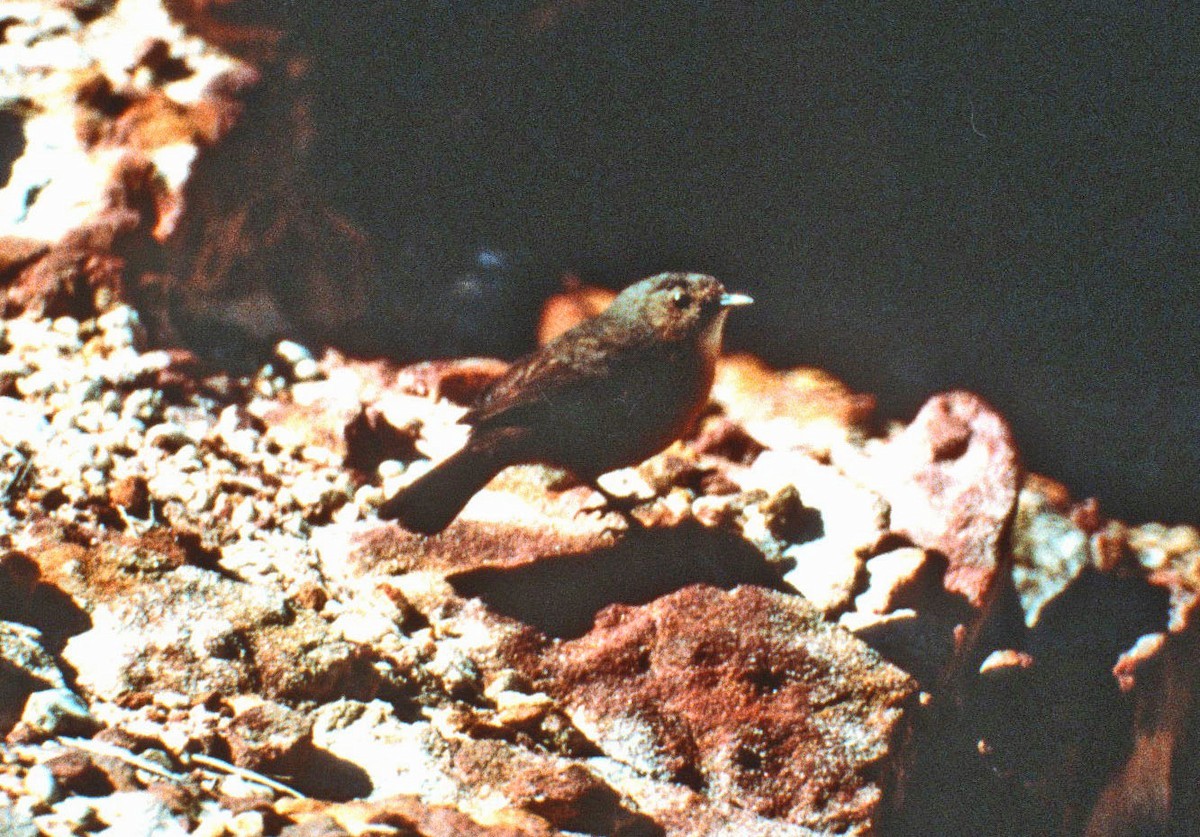Rockwarbler
A species of Rockwarbler Scientific name : Origma solitaria Genus : Rockwarbler
Rockwarbler, A species of Rockwarbler
Botanical name: Origma solitaria
Genus: Rockwarbler
Content
Description General Info
 Photo By Don Roberson
Photo By Don Roberson Description
The rockwarbler (Origma solitaria), is a bird in the family Acanthizidae. It is the only bird species endemic to the state of New South Wales in Australia. English artist and naturalist John Lewin described the rockwarbler in 1808. For many years it was the only member of its genus until genetic work showed that it was related to two species of mousewarblers from New Guinea. The rockwarbler diverged from the common ancestor of the other two species around 9 million years ago. Rockwarbler has been designated the official name by the International Ornithologists' Union (IOC). Common names also include cataract-bird, cave-bird, origma, rock-robin, and sandstone robin. A former common name, hanging dick, came about from its nest, which hangs suspended in a cave. The rockwarbler is 14 cm (5.5 in) in length and weighs around 14 g (0.49 oz), with predominantly dark grey-brown plumage, darker wings and more red-brown underparts, cinnamon-tinged face and forehead, and whitish throat. Its tail is black. It is usually seen hopping erratically over rocks while flicking its tail. Its preferred habitat is woodland and gullies with exposed sandstone or limestone rocks, and often near water. Its distribution is central eastern New South Wales, within a 240 km (150 mi) radius of Sydney. It has been affected adversely by human-modified habitat, and has declined in these areas. Mated pairs maintain a territory, nesting in a sandstone cave. The nest is a hanging structure made of grasses, roots, bark and moss, with spider web used as an adhesive. It has a dome-shaped entrance. Breeding season is from August to January, the female laying a clutch of three eggs, which take around 23 days to hatch. 
Size
15 cm
Nest Placement
Shrub
Feeding Habits
Rockwarbler consumes a variety of insects like beetles, ants, and wasps, as well as seeds and occasionally scavenges leftovers from humans. It forages on the ground, in vegetation, and on rock surfaces, adeptly probing crevices and sally-hovering for prey.
Habitat
The rockwarbler is typically found in areas with exposed rock formations such as sandstone, limestone, and granite, often in proximity to water. Common habitats include gulleys, steep rocky hillsides, ravines, and cliffs. It is associated with open eucalypt woodland, heath, and shrubland, while it tends to avoid moist forests and woodlands.
Dite type
Omnivorous
General Info
Feeding Habits
Bird food type

 Photo By Don Roberson
Photo By Don Roberson Scientific Classification
Phylum
Chordates Class
Birds Order
Perching birds Family
Australasian warblers Genus
Rockwarbler Species
Rockwarbler